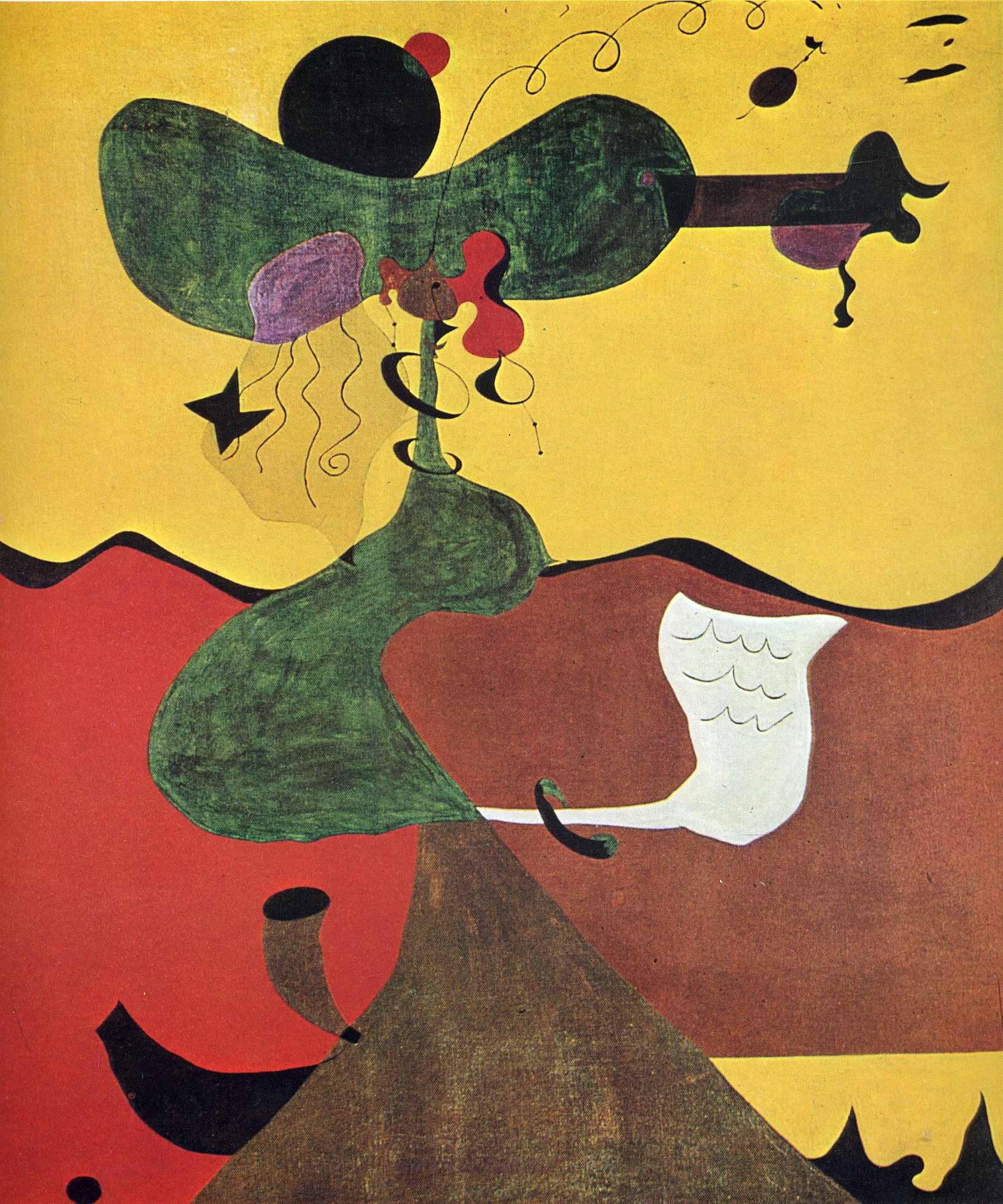Despite being called 'the most surrealist of us all' by Andre Breton, the Catalan painter, Miro, who created this work refused to sign Surrealist manifestos disliking their notion of 'psychic automatism' in which subconscious images were supposed to be painted on a canvas without thought.
His wish to 'assassinate painting', however, gave him the status of Surrealist's enfant terrible. Unlike other Surrealists, though, he did not paint suffering but rather life's enjoyment. The fact that Miro painted in series showed some of the considerable thought that he employed in his work. The Portrait of Mrs Mills (painted in 1929) is the most impressive of a portrait series taking their cues from works from old portraitists. This series followed another of Dutch interiors very loosely based on works by Dutch masters. In both series Miro tranformed the original works by using vivid colours and simplifying and distorting naturalistic shapes.
Although the Portrait of Mrs Mills was originally thought to have taken a picture by Constable or Gainsborough as its origin it, in fact, takes as its guide an eighteenth-century image by the miniature portraitist, George Engleheart, one that depicts a naturalistic Mrs Mills (an actor and singer with an extravagant hat). Miro has completely transformed her by distorting her figure and background into shapes that are unmistakably artificial in order to emphasize the vitality of her inner life.
When Miro's Portrait of Mrs Mills is compared to that of George Engleheart some similarities can be recognised despite the previously noted difference between the two works. In both portraits there is a large hat that is white in the original and green in the painting by Miro. A white sheaf of paper also appears in both works being shown as a letter in Engleheart's image and music in Miro's oil painting. Although the body of Mrs Mills does appear in both pictures Miro has sexualized it by distortion and made it vivid green instead of the pastel colours used in the original work. Miro has simplified the hand to a black curve with a green blob at each end perhaps to emphasize the earning power of the paper in her life.
As well as making use of vivid colours Miro's painting makes use of biomorphic contours (curved forms used in abstract art) which has led to speculation that a fellow Surrealist painter Arp may have influenced Miro's technique. Miro himself has said that this was not the case and that his biomorphic contours were inspired by Catalan frescoes he knew as a child. The oil painting is kept at MOMA (Museum of Metropolitan Art) in New York and measures 116.7 x 89.6 cm. It was bequeathed by James Throll Soby who writes, interestingly, that Miro may have found some appeal in the curved lines of eighteenth-century costumes and figures. The Portrait of Mrs Mills was painted relatively early in Miro's long career before his gradual move to works closer to abstractionism.





